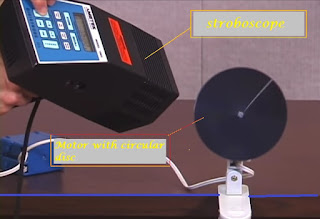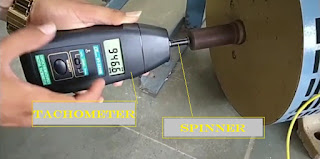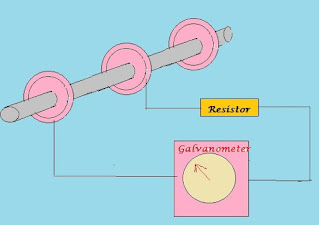Hi friends, By reading this topic you will understand the concept of slip, slip speed, Slip %, Slip, and the methods to measure slip of induction motor.
Finally, you will get an answer to the question of what is the use of slip measurement and its formula?.
Formulas play an important role in slip measurement. So please aware of the formulas.
If you really liked my explanation please don't forget to follow......👀
What is slip speed, slip and slip % in the motor?
Slip speed: The difference between synchronous speed (Ns) and rotor speed (Nr) is called slip speed.
Slip: The ratio of slip speed to the synchronous speed is called slip. Slip is symbolized as "S" and expressed in % (percentage)
Motor slip Formulas
Slip speed = Synchronous speed (Ns) - Rotor speed (Nr)
Slip = slip speed / Ns
Slip % = slip speed / Ns * 100
Ns -Synchronous speed,
Nr or N = Rotor speed (Rotating speed of the motor)
Property of Slip
- Rotor speed (Nr) speed should be always less than synchronous speed (Ns).
Do you Know?😃
Electrical engineers consider slip as a fundamental factor for motor operation because slip is the relative motion of the motor and this is the condition where torque is produced.
5 Methods to measure slip of an induction motor
It is possible to use these 5 methods to measure both the slip and the slip speed of the motors such as Induction motor, Synchronous Motor, Synchronous Generator.
- Stroboscope or Strobe light method
- Tachometer method
- Galvanometer method
- Mechanical Differential Counter(MDC) method
- Electro-Mechanical Counter method
In this article, I have tried to explain 3 important methods to measure slip.
Stroboscopic method
The stroboscope is a device that helps in the stroboscopic method to measure the slip of the motor. Stroboscope was invented in the 1930s. This instrument helps to investigate the motion of motors because of their fast-moving characteristics.
What is a stroboscope?
A stroboscope is an instrument device that produces flashing lights at a regular rate and it is possible to adjust the rate of flashing lights. A stroboscope is also known as a strobe light.
Stroboscope also helps in frequency (f) measurement.
How it is used in slip measurement?
In the stroboscopic method, the flashlight of the stroboscope is focused on the circular painted cardboard disc for a period of time and by counting the number of lines passing the reference point, we will get the rpm of the rotor (Nr).
For exact slip measurement using stroboscope: Click Here
General
Speed measurement using a stroboscopic method is an important practical question and familiarity with this instrument helps in the examination.
Tachometer method
The tachometer is a device that helps in the tachometer method to measure the slip of the motor. The device tachometer was invented in the year1817 by a german engineer, Dietrich Uhlhorn.
What is a tachometer?
The tachometer is a measuring device used to measure the RPM of the motor. There are two types of tachometer Contact tachometer and Non-contact tachometer.
Contact tachometer: Shaft of the tachometer or spinner contact with the shaft of the motor and rotates at the same speed motor to measure the rotor speed (Nr)
Non-Contact tachometer: A beam of light from the tachometer will be a focus on the shaft of the motor and the RPM of the motor will be measured. (Uses sensor for measurement)
Did you know?😀
A digital tachometer has the memory for storing the measured values for future use.
How it is used in slip measurement?
The shaft or spinner of the tachometer is manually connected to the shaft of the motor, to measure the speed. It gives the actual value of rotor speed (N) at no-load condition.
General
Analyzing the slip of induction motor using a tachometer is one of the important practical questions and familiarity with the device or instrument helps in the examination.
Galvanometer method
A galvanometer is a device used to measure the slip of the motor in the galvanometer method. The device was invented in the year 1820 by German mathematician and physicist Johann Schweigger
What is a galvanometer?
A galvanometer is a sensitive device consists a magnetic field needle, that responds to the magnetic field generated by the electric current.
How it is used in measurement?
This device helps in the measurement of the rotor frequency and stator frequency. Slip can be determined by the ratio of rotor frequency to the stator frequency increases the accuracy of the slip measurement.
S=fr/f
- fr= rotor frequency
- f= supply frequency or stator frequency
Measurement of slip using a Galvanometer is very simple.
General topic to discuss
What is synchronous speed(Ns)?
Synchronous speed: The rotating magnetic field generated in the surface of the stator due to electric current is known as synchronous speed (Ns) or Stator Speed (Ns)
Motors such as the Induction motor, Synchronous motor, and synchronous generator experiences a rotating magnetic field on their stator winding because of power supply and frequency. Synchronous speed (Ns) is also known as flux speed.
The formula of synchronous speed (Ns)
It is very easy to memorize the formula of synchronous speed. By understanding its concept, you can derive it easily.
Two important factors involved in the synchronous speed (Ns) formula
- Frequency, and
- A number of field poles in the motor.
Ns=120f/P
- f -Frequency (Cycle per second).
- P -Number of Poles in the motor.
- Ns -Synchronous speed in rpm.
- 120 -WInding displaced at 120 degrees.
What is rotor speed?
Rotor speed is defined as the speed at which the rotor of the induction motor rotates.
How to find rotor speed(Nr)?
Rotor speed (N) is nothing but the actual rotating speed of the motor, N can be measured with the instrument Tachometer.
Formula to find the rotor speed (Nr)
We use the below formula, to calculate the value of rotor speed(N),
N= (1-S) Ns
Constant values of Slip (two conditions for slip)
Generally, Slip has two constant values particularly at starting and running conditions.
What is the value of the Slip at the standstill or initial condition of the motor?
How?
At the starting condition of the induction motor, the value of rotor speed (N) is 0, and the value of synchronous speed (Ns) is unity (1).
Proof
S= Ns-0/Ns
Substitution, Ns=1
S=1
What is the value of slip at synchronous speed?
What is the value of Slip at running or normal operating conditions?
S<1
At normal operating condition, synchronous speed and rotor speed attains it full RPM. So both the speed makes the slip to greater than 1.
Conclusion
Slip and Slip measurements help us to identify the healthiness of the motor. If any changes in the value of the slip indicate that there is a malfunction in the motor. Understanding the formulas helps you to solve practical problems.
For better understanding please read one more time. If you have any doubt please post a comment. I am waiting for your valuable comments.





Main Ek electrician hun mujhe kam ki jarurat hai
ReplyDeleteThanks for sharing good information. I really love your content. I have also good info for you please my website. Read more:- Stroboscope
ReplyDelete